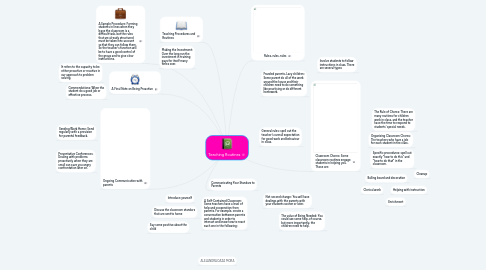Teaching Routines
by Alejandra Daza

1. Teaching Procedures and Routines
2. Making the Investment: Over the long run the investment in training pays for itself many times over.
3. A Sample Procedure: Forming students in lines when they leave the classroom is a difficult task, but the rules that are already structured must be taken into account so that they can follow them. So the teacher's function will be to have a good control of the group and to give clear instructions.
4. Communicating Your Standars to Parents
5. A Self-Contained Classroom: Some teachers have a level of help and cooperation from parents. For example, create a conversation bettween parents and students in order to interact and know how to react each one in the following:
6. Introduce yourself
7. Discuss the classroom standars that are sent to home
8. Say some positive about the child
9. Ongoing Communication with parents
10. Sending Work Home: Send regularly with a provision for parental feedback.
11. Commendations: When the student do a good job or effective process.
12. Preventative Conferences: Dealing with problems proactively when they are small can save you angry confrontation later on.
13. A Final Note on Being Proactive
14. It refers to the capacity to be either proactive or reactive in our approach to problem solving.
15. ALEJANDRA DAZA MORA
16. Rules, rules, rules
17. Involve students to follow instructions in class, There are several types
18. General rules: spell out the teacher's overall expectation for good work and behaviour in class.
19. Specific procedures: spell out exactly "how to do this" and "how to do that" in the classroom.
20. Classroom Chores: Some classroom routines engage students in helping you. Those are:
21. Frazzled parents, Lazy children: Some parent do all of the work around the house and their children need to do something like practising or do different homework.
22. The value of Being Needed: You could use some help, of course, but more importantly, the children need to help.
23. The Rule of Chores: There are many routines for children work in class, and the teacher hace the time to respond to students' special needs.
24. Organizing Classroom Chores: The teachers who have a job for each student in the class.
25. Cleanup
26. Bulling board and decoration
27. Enrichment
28. Clerical work
29. Helping with instruction
30. Not second change: You will have dealings with the parents with your students sooner or later.


